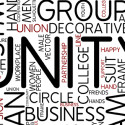I recently attended the final concert performed by the 2015 Arizona Musicfest Orchestra in Scottsdale, Arizona. One of the works on the concert—the Glagolitic Mass by Leos Janáček—was of particular interest to me. Janáček’s music is deeply influenced and inspired by Moravian and other Slavic folk music.

From early in his career, he was dedicated to folkloristic research that informed his work throughout his life. He ultimately developed a highly original style using the fundamentals of folk music without being stylistically imitative. He developed a particular sensitivity to the melodies and rhythms of speech and used the essence of the inflections, cadences, and emphases of Slavic spoken language in his works. In many ways, the Mass represents a culmination of his musical, physical, and emotional maturity.
What I find interesting about folklore is the dialogue it gives us with storytellers from centuries past.
~ Terri Windling
What is perhaps most interesting is the way the basic form of the traditional Catholic Mass, along with the ninth century Slavonic language of his countrymen, was used to give voice to his expression of faith in the certainty of survival of the nation. He said he was not only expressing faith on a religious basis but on the basis of moral strength. Janáček set the Mass in Old Church Slavonic, which uses a distinctive alphabet called “Glagolitic,” the first written form of the Slavonic language, to celebrate and unite the Slavonic people as they spread across Europe. It gave me as sense as I listened that the principle of unity in musical composition was mirrored in his desire to celebrate the common ties or cultural roots they shared.
The art of dramatic writing is to compose a melodic curve that will, as if by magic, reveal immediately a human being in one definite phase of his existence.
~ Leoš Janáček, Letters and Reminiscences
 Artists give us a sense of unity in their works by creating the feeling of familiarity. It’s something we can depend on and trust. Here are some basic aspects of unity in a work of art.
Artists give us a sense of unity in their works by creating the feeling of familiarity. It’s something we can depend on and trust. Here are some basic aspects of unity in a work of art.
[sws_checklist]
- It is the result of how all element and principles work together.
- All of the parts must have some relation to each other.
- Everything must fit together to create the overall message and effect.
- There is unity when nothing detracts from the whole.
[/sws_checklist]
At the same time, too much sameness is boring, and it’s critical to add just the right amount of variety to stimulate and maintain interest. The reflection of this principle in both Janáček’s compositional elements as well as the message is fascinating. The lilts of the language and the basic Mass structure gave a sense of familiarity to the work. He expressed a sense of unity among Slavic nations along with the concept of pantheism. The variety came from aspects such as the use of the Mass from more than “just a religious basis” and the scoring, which used unusual instruments like the timpani.
We are only as strong as we are united, as weak as we are divided.
~ J.K. Rowling, Harry Potter and the Goblet of Fire
Janáček used the principle of unity in music composition to express the profound spiritual bonds underlying the disparate cultural traditions of the Slavic nations. Understanding the concept of unity is important to our own personal expression in everyday life. Just as in creating art, unity with diversity usually has much more to offer.
— Pat
Sign-up for the Arts Awareness eNewsletter and receive a free gift “Three Lessons to Begin to Make Artistic Principles Work for You in Fascinating Ways.” Like Arts Awareness on facebook.
